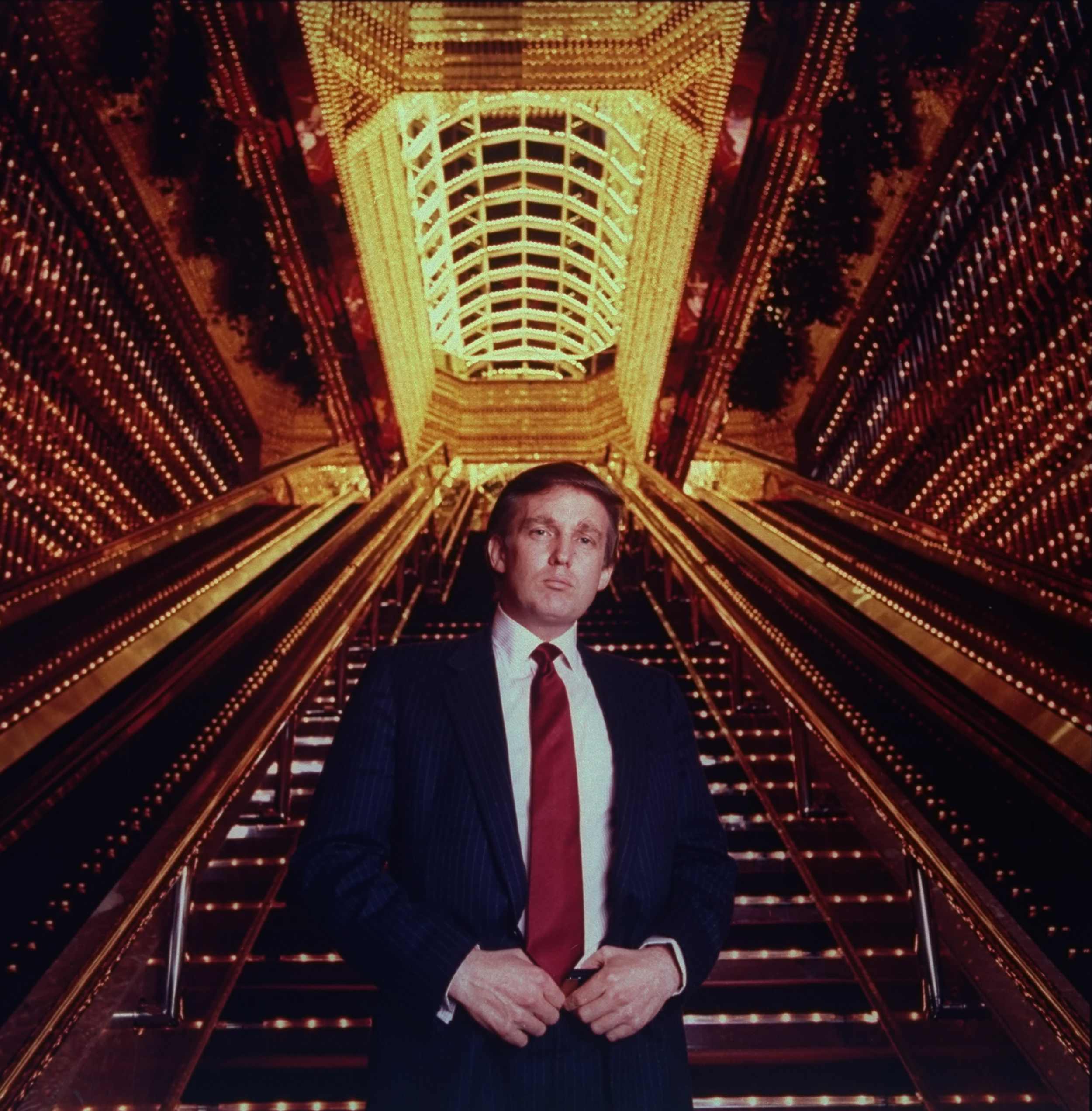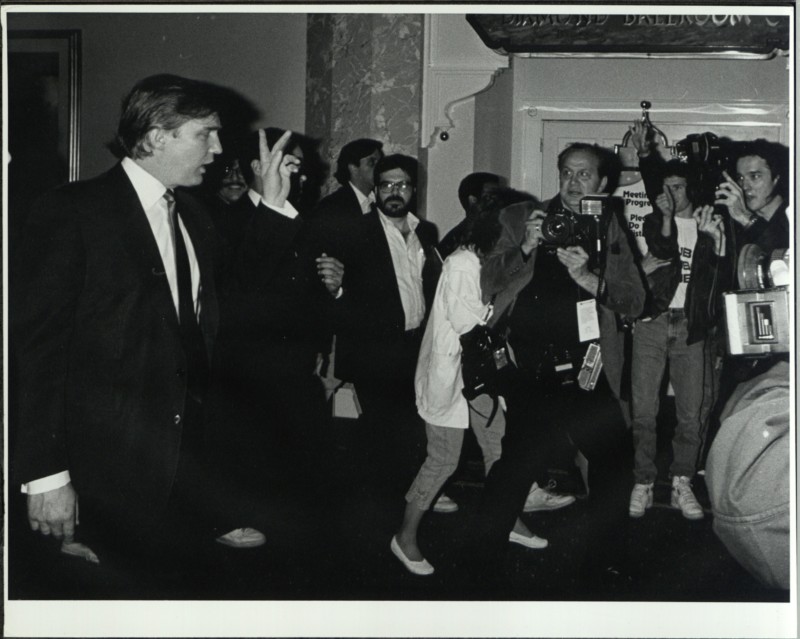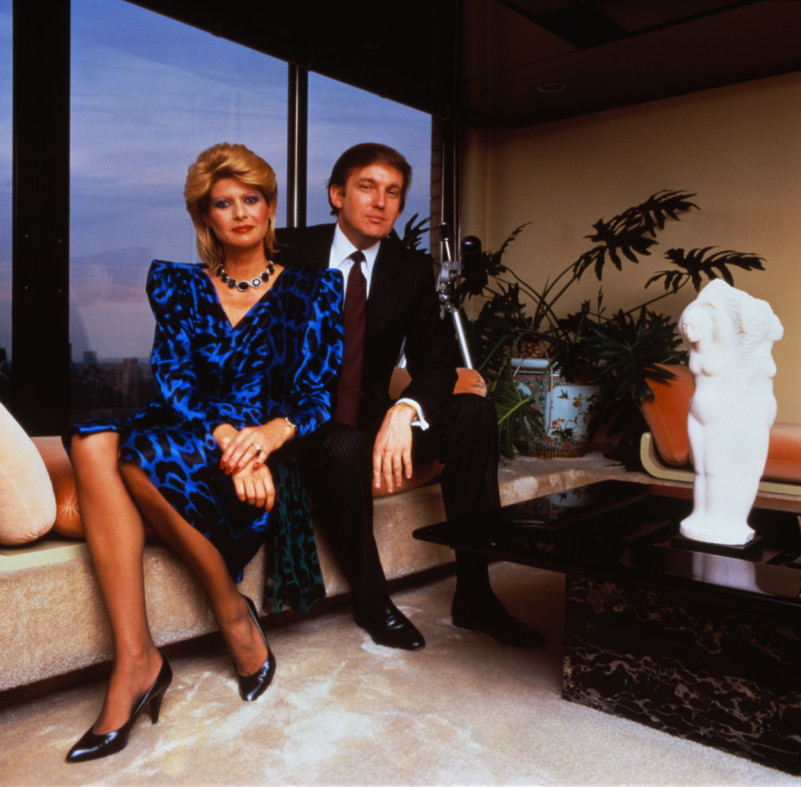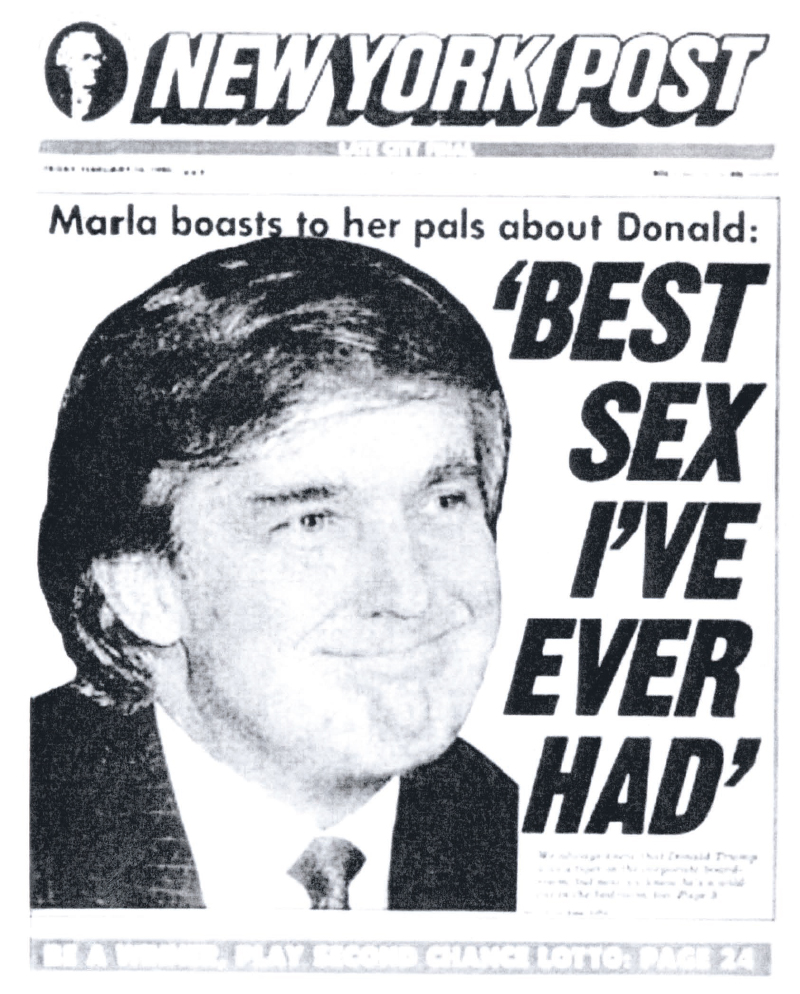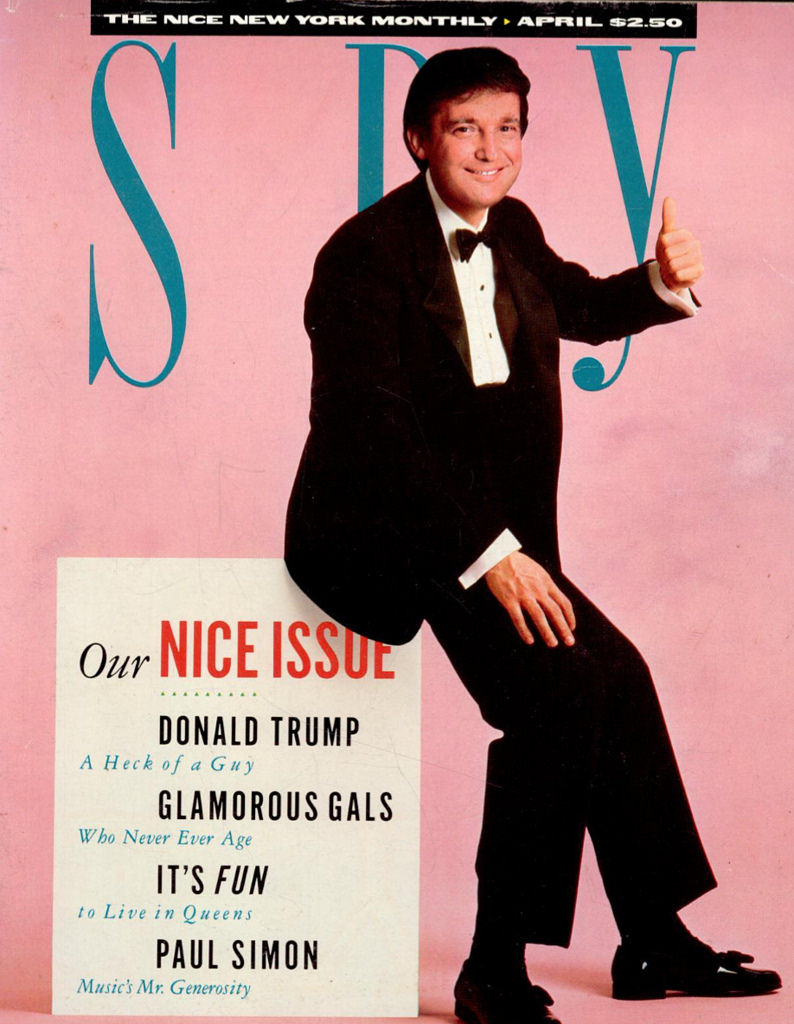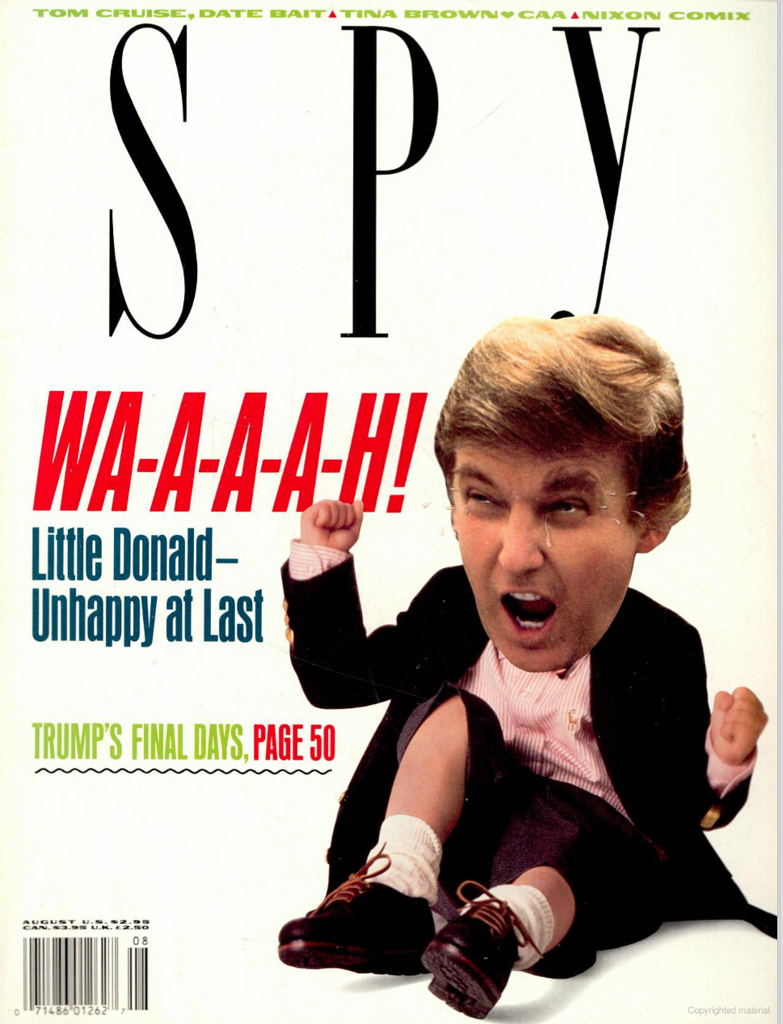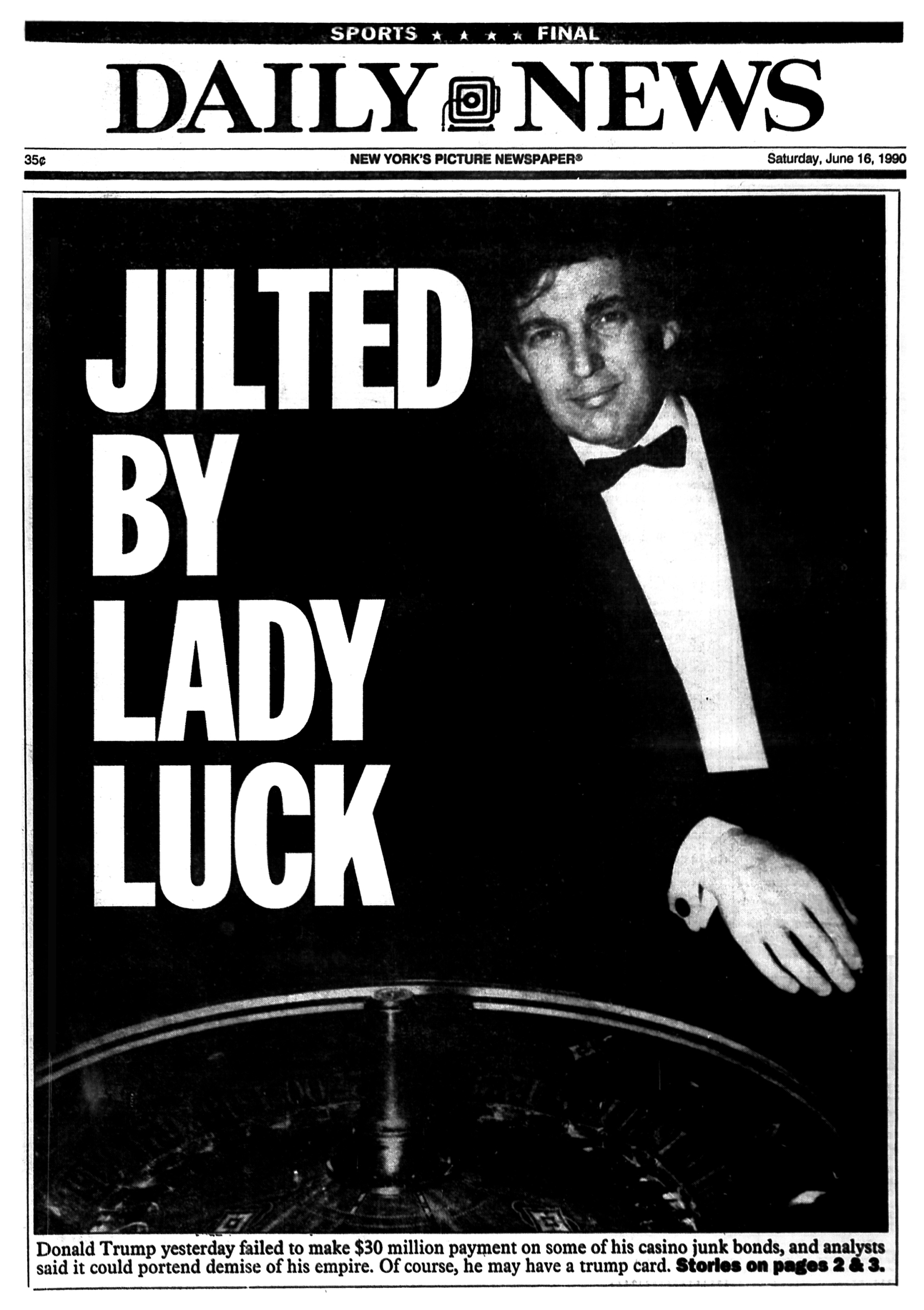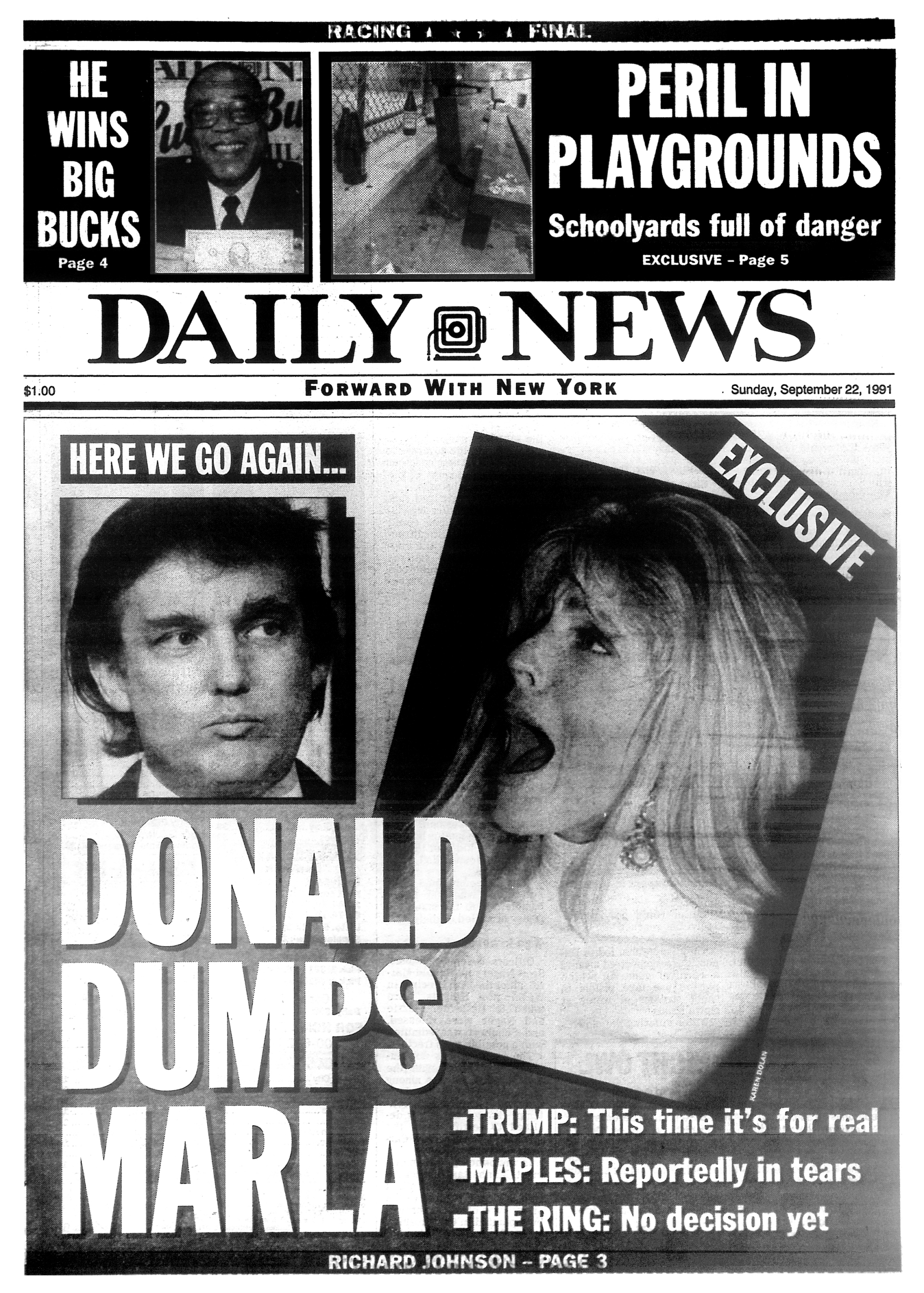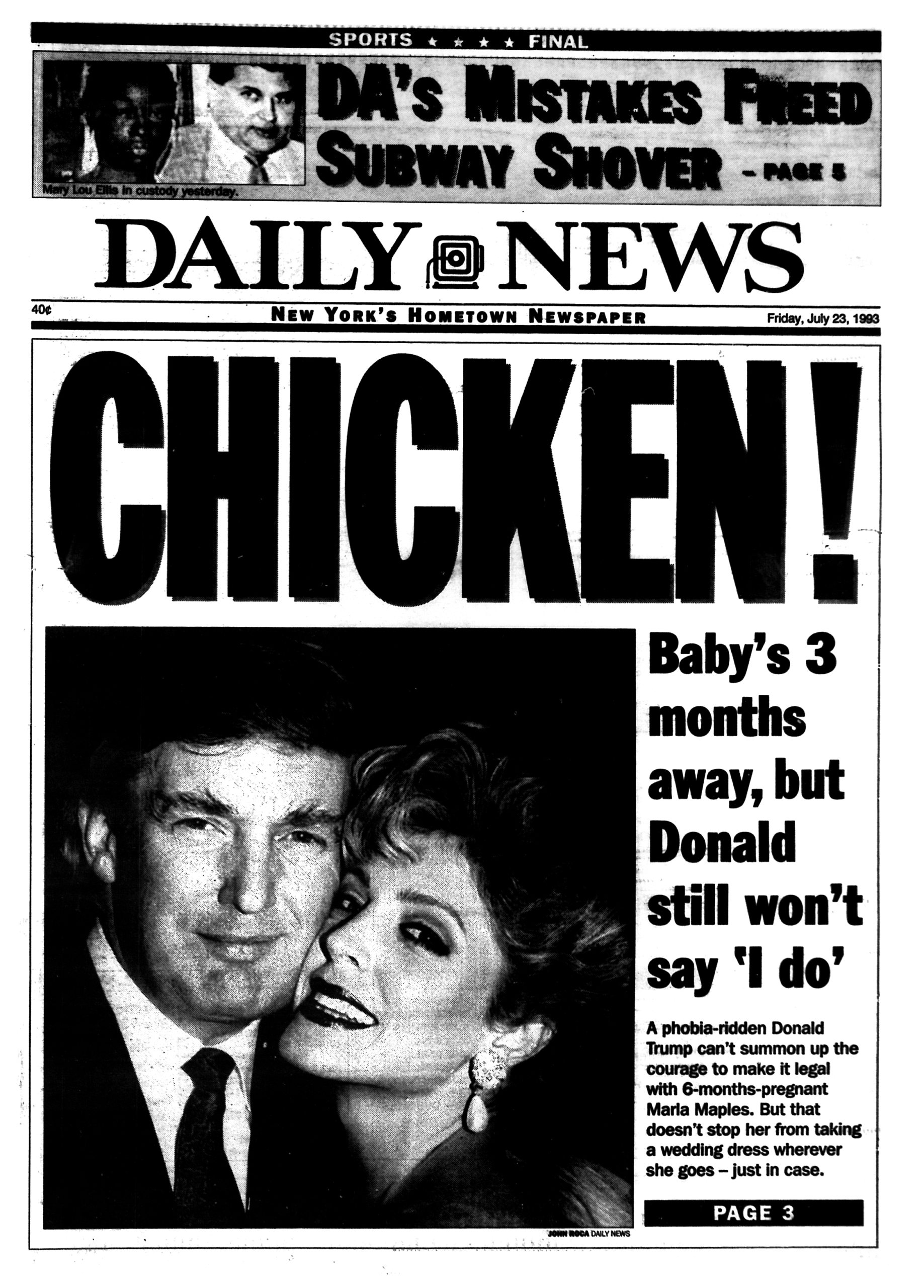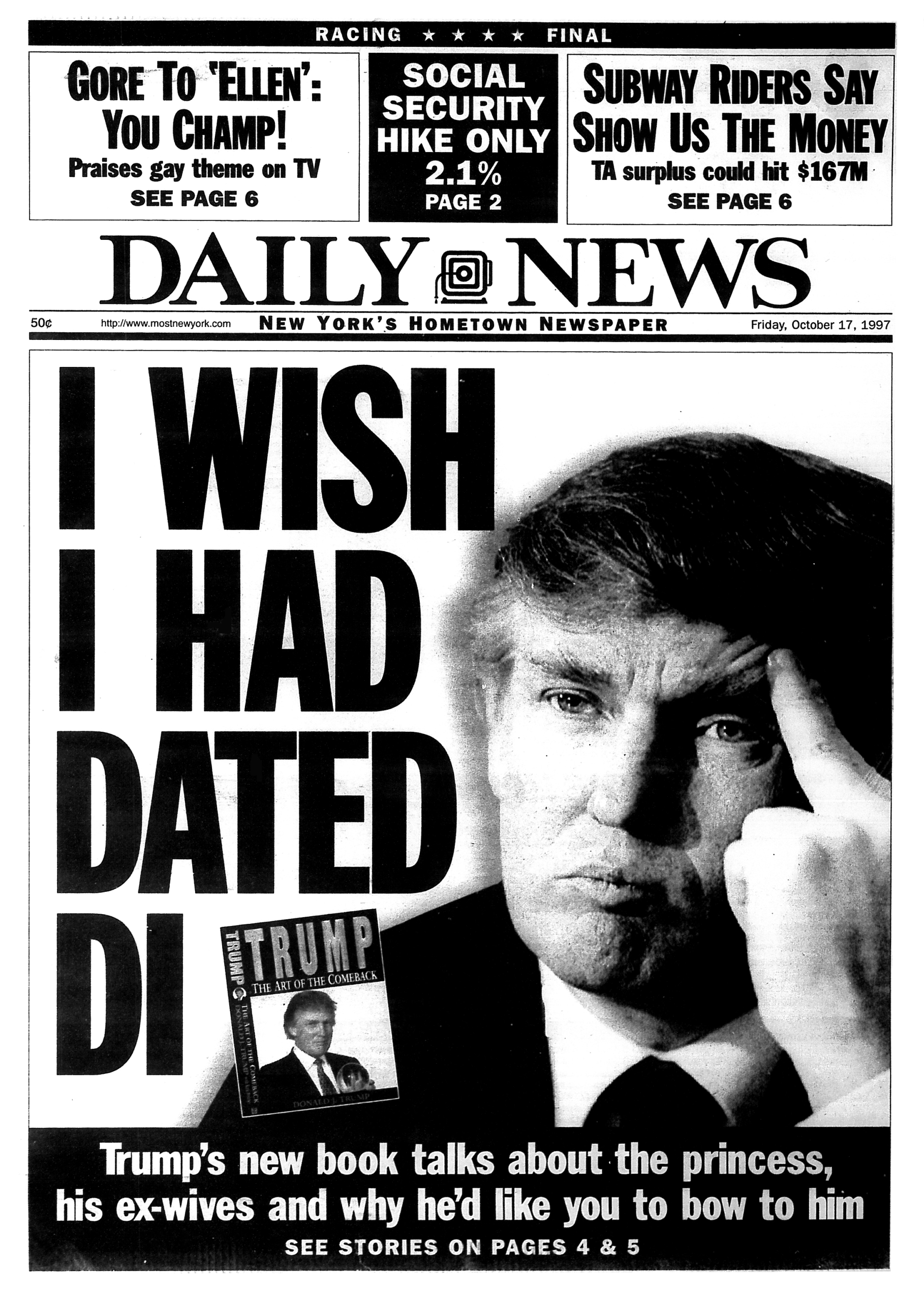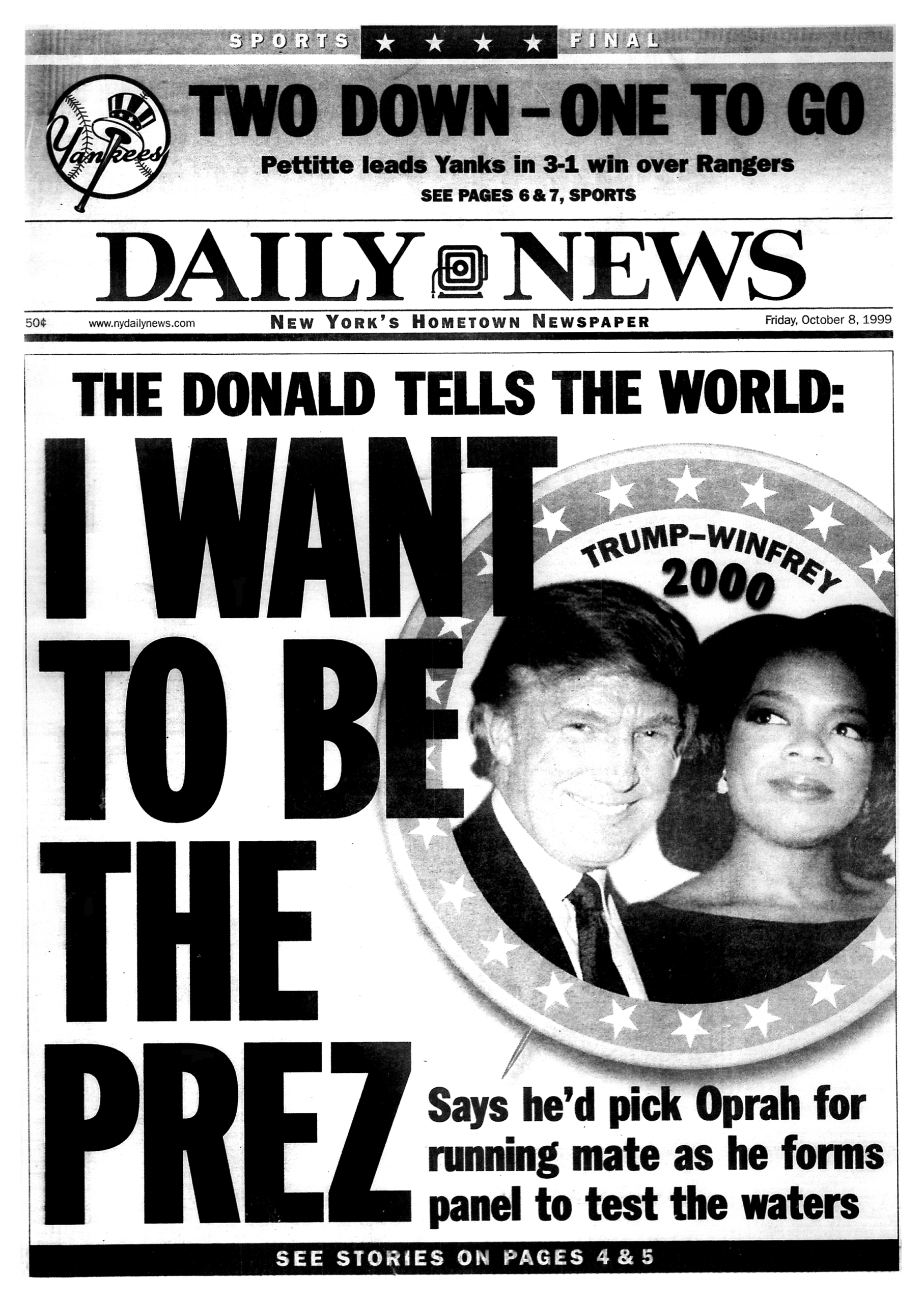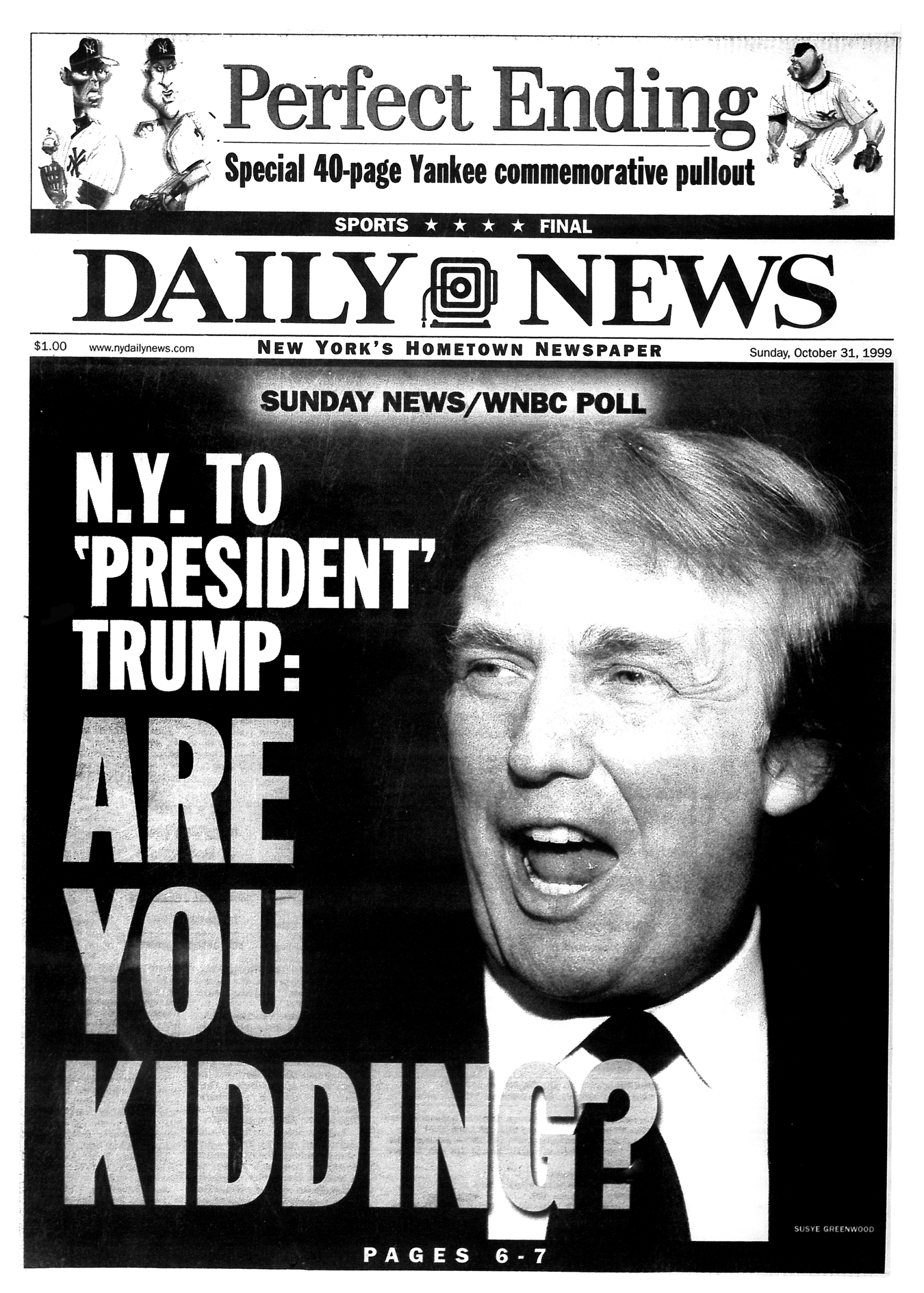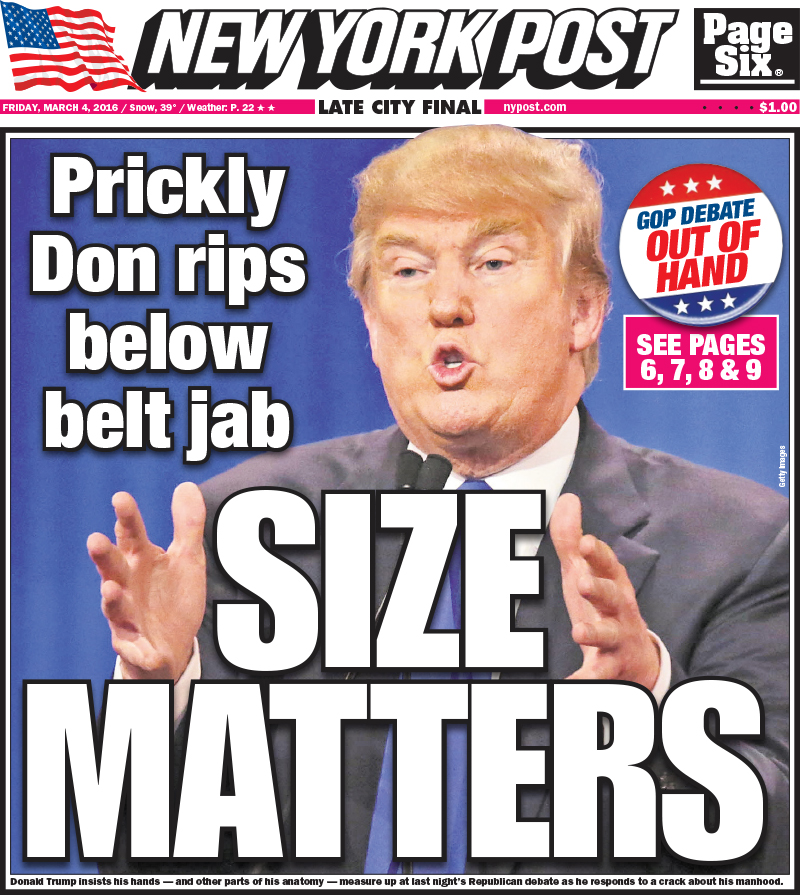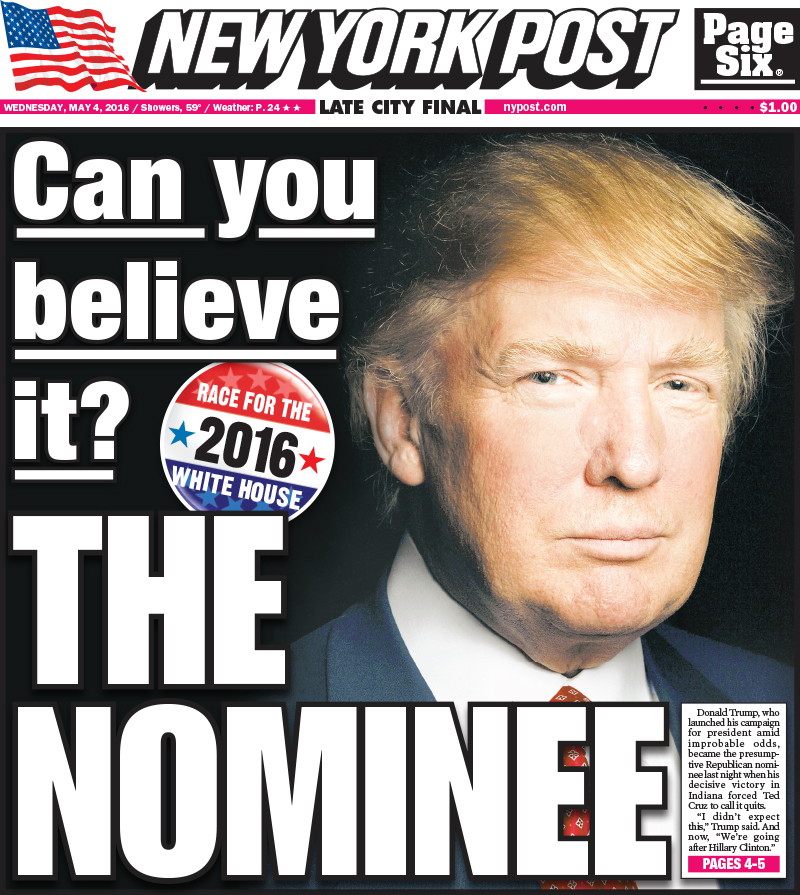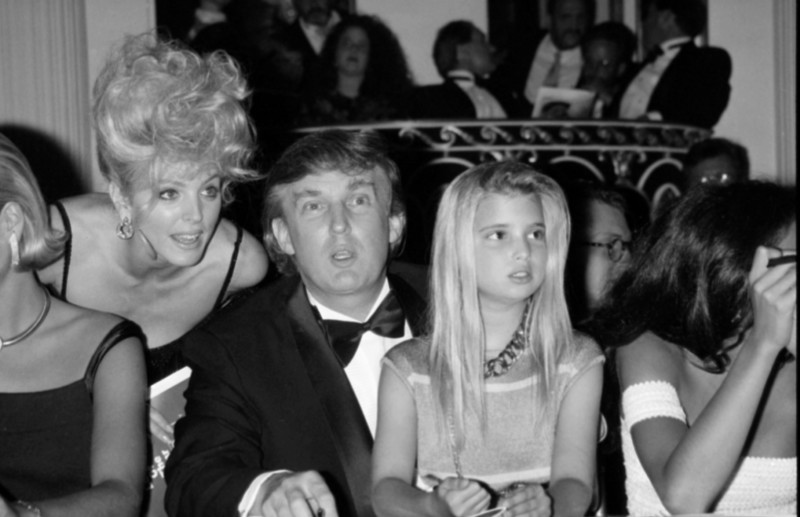The Apprentice had just begun its second season in late 2004, and Donald Trump, by his own account NBC’s biggest star, was on the phone.
It was hardly unusual to be talking to Donald (it was, in those days, never “Mr. Trump,” and certainly not “Mr. President”). For the previous 15 months, I had been writing a five-day-a-week gossip column for the New York Daily News, and the “thatch-roofed billionaire”—Trump’s occasional moniker in my column—appreciated how hard it was for a tabloid reporter to find copy day after day, and was only too happy to fill the void.
ICYMI: NYTimes reporter gets candid about emotional toll of covering Trump
A phone call to his longtime executive assistant Norma Foerderer usually resulted in a return call from Trump within five or 10 minutes. In this case, however, I wasn’t looking for Donald. I had dialed the main switchboard of the Trump Organization asking to speak to Don Jr., then a 26-year-old executive in his father’s real-estate development firm.
I was hoping to follow up with the younger Trump about the complaints of half a dozen rent-stabilized tenants at Manhattan’s Trump Park Avenue, of which he was nominally the manager. Residents of the 32-story building had told me the Trumps were deliberately letting their apartments fall into disrepair as part of a hardball harassment campaign to force them out. Trump could then rent their units at much higher prices to Chinese and Russian oligarchs.
In an earlier conversation, Don Jr. had claimed that the aggrieved tenants were merely using the Trump name to shame the company with bad publicity so they could continue paying below-market rents for their posh apartments. “They are wealthy people who want a free ride,” he sniffed. Seconds after hanging up, I learned, young Don had phoned one of the complaining tenants, an elderly widow, and threatened her with a lawsuit.
I’d wanted to revisit some of these issues with Don Jr. But when I identified myself to the receptionist, I was transferred instead to his dad. Friendly and breezy as usual, Donald went down the list of complaining tenants and trashed each one by name in deeply personal terms: This one was a loser, that one was a liar, the other one was a fake. As for the elderly widow, “I’m very disappointed in her,” Trump told me. “I was a friend of her late husband’s. And now she’s living with a 30-year-old guy. I can tell you [her husband] is looking down from heaven and asking, ‘What’s going on here?’ ”
I was surprised and, to be honest, genuinely impressed that with all of the real estate issues presumably on his plate—to say nothing of his beauty pageant, modeling agency, wardrobe line, eponymous magazine, bankrupt casinos, and hit television show—Donald could demonstrate such an intimate and scurrilous knowledge of put-upon, obscure renters in one of his less-flashy condo buildings. (The widow, it turned out, was indeed cohabiting with a 34-year-old man, a family friend who was about to marry a woman his own age, but who often stayed in the widow’s spare bedroom because she didn’t like being alone.)
It’s tough for me to admit this now, more than a dozen years later, but Donald’s willingness to abuse his tenants in a gossip column, entertainingly if brutishly, not only gave him the upper hand, it also invested tabloid-ready melodrama and prurience into what otherwise would have been a dreary item about an everyday occurrence in New York City.
Thus I managed to file another column and hold onto my job. But Donald Trump had won. Again.
It’s easy to forget, given Trump’s current war with the press, but there was a time, not so long ago, when Trump’s mastery of the news media—or at least the branch of it that helps shape and define the popular culture—was all but complete. Understanding that era helps to understand how this most unlikely of presidents made it into the White House, as well as why he responds the way he does to the press now that he is there.
His current cold war with the press—featuring name-calling, antagonism, and bitter feuds—runs counter to a media strategy that served Trump well his entire adult life. Through a combination of ego, ruthless energy, laser-like focus, utter availability, and even charm, he controlled the narrative about himself for the better part of four decades—especially in the New York tabloids, of which I was a part—and turned his name into a valuable commodity. Now he has lost that control, and Trump simply has no idea how to respond.
Through a combination of ego, ruthless energy, laser-like focus, utter availability, and even charm, he controlled the narrative about himself for the better part of four decades.
In the late 1980s and early ’90s, Trump labored overtime to beguile influential editors, reporters, and celebrities, regularly using the Trump helicopter or, if it was a larger group, the gold-fauceted Trump jet, to fly the likes of New York Editor Edward Kosner, Wall Street Journal Managing Editor Norman Pearlstine, “Page Six” Editor Richard Johnson, and even Liam Neeson and Norman Mailer to Atlantic City to give them the run of the Trump Plaza and ringside seats for heavyweight boxing matches. (It must have been cause for collective bewilderment in the fight crowd when Trump arranged for legendary announcer Michael Buffer, of “Let’s get ready to rum-mmm-ble!” fame, to bellow “Ladies and gentleman, please welcome Nor-man Pearl-stine, at ringside!”)
Kosner, later editor in chief of the Daily News, recalled accompanying Trump to the casino floor on the way to the boxing venue.
“That’s when we first saw what is now his populist appeal,” Kosner tells me. “There were all these people from the bridge-and-tunnel crowd stuffing their money into his slot machines, yelling ‘Way to go, Donald! You’re the man!’ ’’
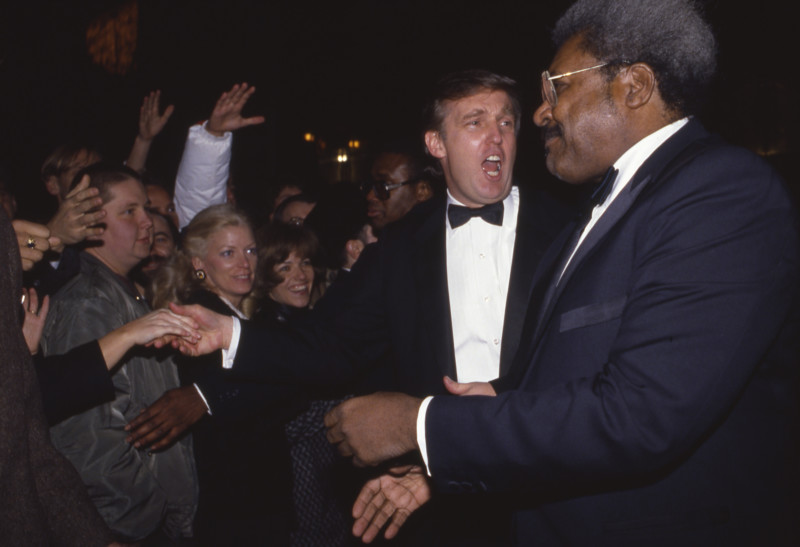
Donald Trump and Don King attend a Trump book party at the Trump Tower in December 1987, New York City. (Photo by Sonia Moskowitz/Getty Images)
Kosner and his journalist-wife, Julie Baumgold, were guests at Mar-a-Lago, Trump’s private Palm Beach club; had Trump to dinner at their home; and in 1993, attended Trump’s second wedding—after wall-to-wall tabloid coverage of his breakup with Ivana and the birth of baby Tiffany—to Marla Maples (“Best Sex I’ve Ever Had” screamed the Post’s infamous headline about their illicit affair).
The event drew 1,000 guests to the Plaza Hotel, including leaders of New York’s legal, political, and business establishments, O.J. Simpson and his doomed wife, Nicole Brown Simpson, soap opera star Susan Lucci, Broadway icon Tommy Tune, heavyweight boxers Evander Holyfield and Joe Frazier, and, along with 17 television crews, “Page Six” editor Johnson. Baumgold’s quote to The New York Times was itself tabloid-news perfection: “There wasn’t a wet eye in the place.”
With little concern for embarrassing his estranged wife, Ivana, or the impact on their three young children, Trump actively stoked tabloid headlines about his romantic exploits; what wasn’t known at the time was that he was also passing himself off as fictitious publicists named “John Barron” and “John Miller,” phoning unsuspecting journalists to brag in the third person about his irresistible allure and prowess with Carla Bruni and Madonna.
Former Newsday and Daily News gossip writer Linda Stasi, who currently pens an opinion column for the News, recalled returning from lunch one day to find a strange message on her office voicemail.
“It said, ‘Donald Trump is in so-and-so surrounded by beautiful models. He’s there right now if you want to send somebody.’ It was definitely him, but he was disguising his voice. It was absurd.”
Stasi recalled a second instance of Trump-inspired farce in 1993, when then-Daily News Editor Martin Dunn ordered her to the Florida hospital where Maples was giving birth, with the mission of getting an exclusive on the baby.
“I can’t do that,” Stasi pleaded.
“Then you’re fired,” Dunn replied, half in jest, but wholly in earnest.
So Stasi called Trump, who, after she begged and said she would lose her job otherwise, agreed to let her into Maples’s hospital room.
“I know it’s insane, but he let me into her room right after the baby was born. Marla’s reaction was, ‘What is she doing here?’ And Trump said, ‘Well, she’ll get fired if she can’t be here.’ And I said, ‘Can I take a picture of the baby?’—because I’d brought a photographer who was waiting outside. And Marla said no. And Trump said, ‘What if I just take this blanket and pretend I’m holding the baby?’ And I said, ‘No, I don’t think so.’ ”

Donald Trump and his wife Marla Maples are photographed in October of 1991, New York City. (Photo by Contributor A/Contour by Getty Images)
It made little difference that the Trump-concocted narrative—which reveled in greed and kitsch, and marketed his sexual know-how, serial extramarital affairs, and magnificently nasty divorces on the front pages of the New York Post and Daily News—defied traditional concepts of decency and deployed the slash-and-burn performance skills of Trump’s friend and mentor, the late Roy Cohn.
“In my whole life, I have never met anybody who’s as brilliant as Donald is at building a brand,” New York’s supremely well-connected paterfamilias of public relations, Howard Rubenstein, told me a decade ago. “He’s an absolute genius at it.”
Rubenstein’s accolade for his client—offered at a moment when Trump was regularly appearing on any television show that would have him to hurl misogynistic insults at erstwhile Trump-Maples wedding guest Rosie O’Donnell because she’d mocked him on The View—might be difficult to accept in late 2017 when the 45th president of the United States is garnering historically low approval ratings.
What’s more, while other presidents complained about their coverage, he’s the nation’s first chief executive to publicly and regularly demonize journalists as “dishonest,” “scum,” “the lowest form of life,” and “the enemy of the people.” Those are sentiments with which some of his press-tormented predecessors (Richard Nixon comes to mind) surely would have agreed but, out of a belief in decorum and what it means to be “presidential,” resisted sharing with voters.
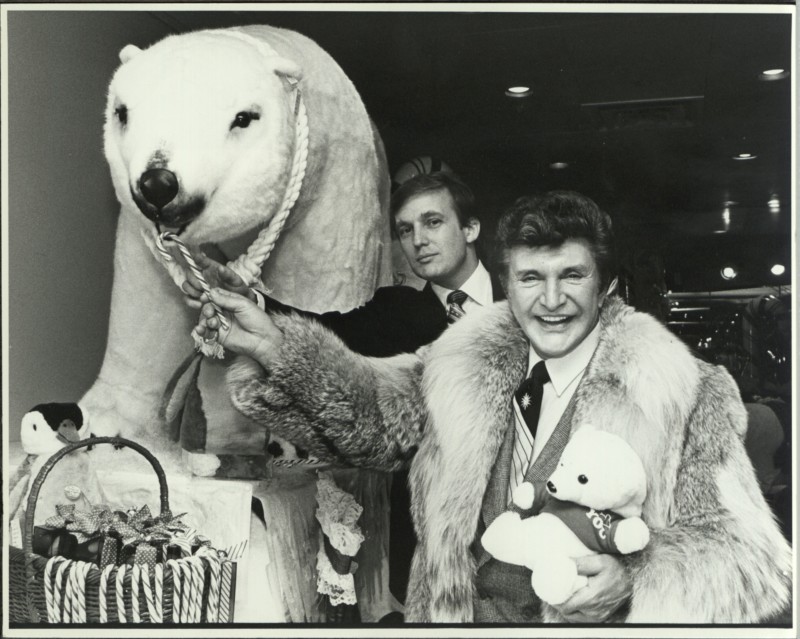
Donald Trump, Liberace and a polar bear, circa 1990. (Photo by The LIFE Picture Collection/Getty Images)
“At times, he seems apoplectic about why he can’t control the media,” says former Washington Post reporter Lois Romano, who wrote the first profile of Trump for the paper’s Style section in November 1984. “He thought that after the election, as he said, ‘people will be nice to me.’ He can’t understand that things aren’t like they used to be 30 years ago—when the tabloids needed him for sustenance.”
Susan Mulcahy ran the “Page Six” column in the early 1980s and reported on Trump with a jaundiced eye—especially after she caught him repeatedly lying, notably about purchasing a palatial weekend house in Greenwich, Connecticut (he denied it), about meeting with former president Nixon at Trump Tower (he denied it), and about investing in a huge parcel of land on the Hudson River to develop an office and residential complex (he claimed it wasn’t happening).
ICYMI: The first reporter to arrive at Vegas gunman’s house has covered the story in many ways–except one
“When he first got into the White House, he wanted people to like him, and he wanted positive attention,” Mulcahy says. “So how is he handling the fact that now it’s all negative, and he can’t control it? He’s freaking out, that’s how. He’s got to be so angry, steam must be coming out of his ears. With all those hamburgers he’s eating, I’m surprised the man hasn’t had a heart attack.”
Yet Trump, at 71, has never operated according to other people’s standards of human (let alone presidential) behavior, and apparently has little incentive to abandon a bare-knuckled media strategy that has proved unbeatable for most of his adult life. The problem now is that the ramifications of his by-the-gut decision-making are on a different scale than when he was selling condos. Rev. Al Sharpton, the civil rights activist and MSNBC host who has known Trump for decades, says, “You can’t play to a New York Post mentality in a New York Times setting. He’d never played to the Times before, he’d played to the Post. And he’s now a guy that’s on the editorial page, talking to ‘Page Six.’ ”
Even if he wanted to, Trump probably couldn’t change, because his manner of conducting himself with the Fourth Estate seems less a calculated strategy than a reflexive expression of his outsider identity.
He’s the son of a carpenter-turned-builder of low-income apartments in Queens and Brooklyn; Donald’s father, Fred, while wealthy, was never considered a peer by such powerful Manhattan real-estate families as the Zeckendorfs, Dursts, and Rudins.
“He thought that the Manhattan real-estate elite looked down on him and his father, and that’s one of the reasons he wanted to put his name all over everything,” Sharpton says. “He had this chip on his shoulder. He thought those guys were the guys who tried to shove him and his dad out, and he was going to pay them back. And he used the media, he used the tabloids, to build a character and a brand—which they felt they didn’t have to do. They thought it was beneath them. Many of them were second- and third-generation, they had a strong pedigree, and they didn’t need that.”
Sharpton continues: “Donald Trump learned early that you can develop a persona with the tabloids—that they like personalities, they like flamboyance, and one feeds the other. He became almost like a Gatsby figure . . . . If Trump were African American, he’d be Don King.”
Sharpton recalls that three weeks after the election, a few hours after he’d offered a similar analysis on MSNBC’s Morning Joe program, the president-elect phoned him at his office. “You got me, Al! You understand!” Trump told him.
Former Daily News gossip columnist A.J. Benza, who was born in Brooklyn and grew up in the white, middle-class enclave of West Islip, Long Island, sees something familiar in Trump.
“I think there’s his relentless nature, of course his pomposity, and a lot of other words that aren’t too flattering, but you cannot look at him and say, ‘This guy doesn’t do what he wants to do.’ He gets what he wants,” Benza says. “I’m used to men like that. I grew up around men like that, which is why I’m not taken aback by what he says and does. They’re New Yorkers, Long Island, Suffolk County Republicans, conservative people—guys who work in the street, fix cars. Trump [who, as a teenager, regularly visited construction projects with his father] has been around Mafiosi, truck drivers, sheet metal, iron workers, pipefitters, concrete. He’s not around little pencil-pushers too often.”
Benza says he buried the hatchet with the president—and even voted for him in California—nearly 16 years after their epic bickerfest on the Howard Stern radio show in February 2001, on which Benza was appearing to promote a book and Trump called in to badger him at excruciating length about “stealing” his longtime girlfriend, model Kara Young.
“I stole his girlfriend, but I didn’t know I was stealing his girlfriend,” the future president boasted, adding that “A.J. doesn’t like Trump for one reason: I stole his girlfriend. I took her away like he was a dog.”
Trump went on: “Trust me, A.J.—she didn’t love you.”
Enraged, Benza threatened to beat Trump with a baseball bat, and creepily invoked Ivanka. “I can’t wait ’til your little daughter gets a little older for me.” To which Trump retorted: “Hey, A.J., I guarantee you have zero chance. A.J., any girl you have, I can take from you—if I want. Any girl you have, I can take from you. You’re full of shit. So any girl you have, I can take. That I guarantee.”
When Benza had first encountered Trump as a subject and a source in the 1990s, the fame-obsessed real estate mogul—whose 1987 best-selling, ghost-written manifesto, The Art of the Deal, had elevated him to national celebrity and earned him a network television profile by ABC’s Barbara Walters—knew his way around the bazaar that is the tabloid gossip business. And Benza was more than willing to trade a bold-face mention for item-worthy material.
“We were trying to fill inches, we were trying to fill column space,” Benza recalls, “and if we got a story from Donald or a tip from Donald, and it meant we had to throw his name in with a supermodel at Yankee Stadium, who cared? So we kept writing about him, even though we rolled our eyes because we just couldn’t keep putting him in a column again. No one said, ‘Oh, you got another Trump story! Great!’ But we kept printing them. And it was Pete Hamill [briefly the editor in chief of the Daily News, who eventually fired Benza in 1997] who came to me and said, ‘I don’t want Trump in the fucking paper anymore.’ ” (Unless, as Hamill later clarified to Politico, Trump pulled out a gun and shot his doorman.)
My own relationship with Trump was surely less histrionic and more professional than Benza’s, although I did accept an invitation to an elaborate post-wedding reception in 2009 for Ivanka Trump and Jared Kushner. When my Daily News gossip column ended after three years in October 2006—the paper’s longtime former owner, Mort Zuckerman, had tired of it and the expense it incurred—Trump continued to make himself available as I freelanced for New York magazine and ultimately joined the staff of The Daily Beast.
Every so often we’d engage in phone interviews arranged by Norma Foederer’s successor, Rhona Graff, and Trump would weigh in on subjects as various as how BP was mishandling the aftermath of the lethal oil-rig explosion in the Gulf of Mexico and why he was considering a presidential run—a topic I didn’t take seriously at the time.
But in October 2012, after Trump continued to push his bogus birther campaign against President Barack Obama and explore new frontiers of indecency—demanding that the president provide Trump with his international travel records and college applications “to my satisfaction” in exchange for a supposed $5 million donation to the charity of Obama’s choice—I wrote a hardly prophetic open letter to Trump in The Daily Beast declaring his final irrelevance.
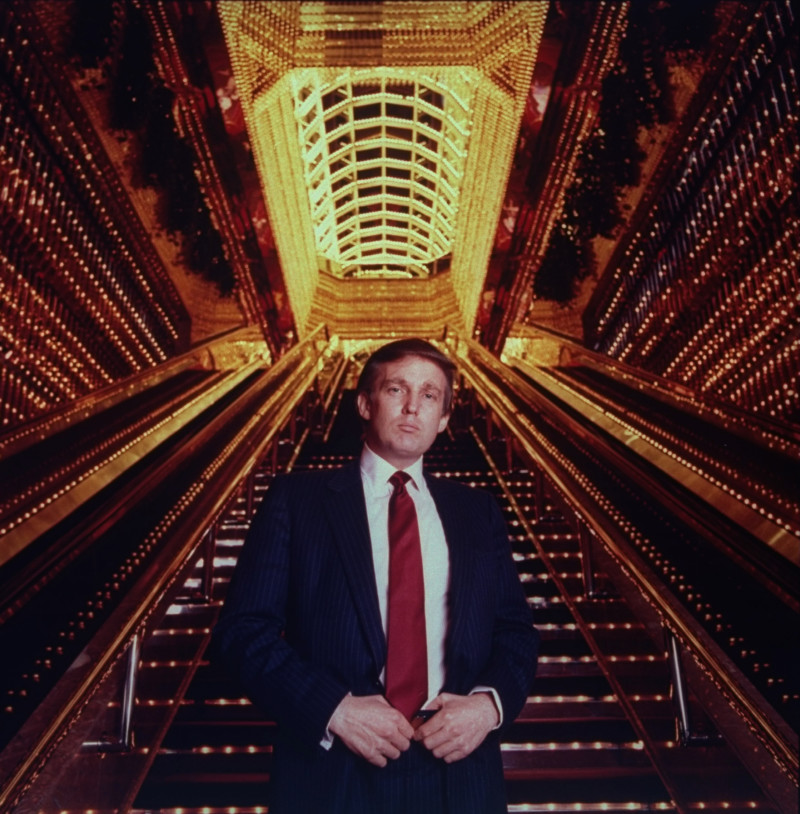
Donald Trump poses in the Trump Tower atrium. (Photo by Ted Thai/The LIFE Picture Collection/Getty Images)
“It’s been fun, Donald. You’ve provided your share of colorful copy and driven more than your share of online traffic with your attention-getting antics and desperate PR stunts,” I wrote, claiming erroneously that the Beast would ignore him from here on out. “Sure, we may be hacks, Donald. But we’re not just hacks. We are also citizens who, at long last, must look past our selfish interests to consider the welfare of the nation we love.”
Trump vaguely responded on Twitter, gloating over the demise of the print edition of Newsweek, with which The Daily Beast was partnered at the time, but he didn’t seem terribly wounded.
“He doesn’t check his pulse to see if he’s alive,” Benza says. “He checks the papers and the internet so he can know that he exists. He’s been in a battle with the media his whole life, but opportunistically, we were there to get him where he wanted to go. We’re complicit with him being president right now. Don’t you agree?”
ICYMI: Newspapers are using two troublesome words to describe the Las Vegas shooting
Lloyd Grove is editor at large for The Daily Beast. He spent eight years as a gossip columnist for the New York Daily News and, before that, he worked at The Washington Post. He has been a contributor to New York magazine and a contributing editor for Conde Nast Portfolio and Vanity Fair.

